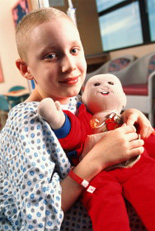
“This is the first study to show that childhood leukemia and brain tumor survivors are at an increased risk of stroke,” study lead author Dr. Daniel C. Bowers, associate professor in pediatrics at the University of Texas Southwestern Medical School at Dallas, said in a prepared statement. “These strokes can occur 10 to 20 years after diagnosis, when most people believe they are no longer at risk for new side effects of treatment, underscoring the need for long-term medical follow-up for childhood cancer survivors,” he added.
Leukemia and brain tumors together account for 53 percent of all cancers diagnosed in children under age 15, according to background information in the article. Current five-year survival rates in the United States are about 80 percent for leukemia patients and 74 percent for brain tumor patients. Due to these high survival rates, it’s important to study the long-term effects of treatments for these cancers, the researchers said.
Cranial radiotherapy is commonly used to treat brain tumors, while treatment for leukemia includes chemotherapy drugs that are injected directly into the spinal fluid that bathes the brain. Leukemia patients may also receive cranial radiotherapy.
This study included over 4,800 childhood leukemia survivors and nearly 1,900 brain tumors survivors, along with a control group of over 3,800 of the patients’ siblings who had not had cancer.
The leukemia survivors had a stroke rate of 0.8 percent (1 in every 125), compared with 0.2 percent (1 in every 500) for those in the sibling control group. The average length of time from leukemia diagnosis to stroke was 10 years.
Among the brain tumor survivors, the stroke rate was 3.4 percent (1 in 30), but was as high as 6.5 percent (1 in 15) among those treated with both cranial radiotherapy and chemotherapy. The average length of time from brain tumor diagnosis to stroke following treatment was 14 years.
Other long-term effects of treatment for childhood cancers include secondary cancers, neurocognitive deficits, heart problems, obesity, hormone deficiencies, and shorter stature, the study authors noted.
“It is important for survivors and their doctors to know that the impact of some of these long-term effects can be reduced through careful follow-up screening and care, and education to help survivors stay healthy long after their treatment has ended,” Bowers said.
